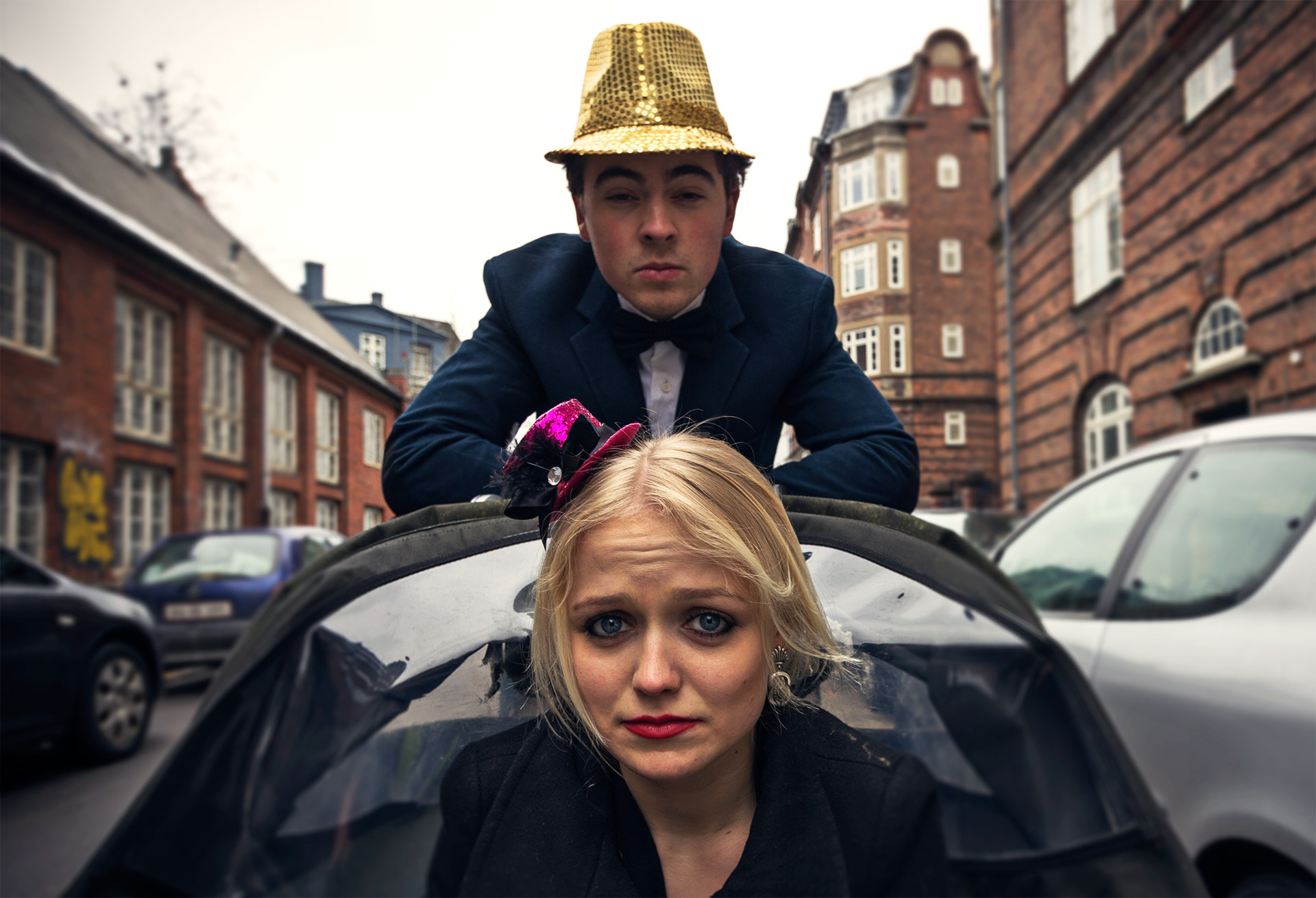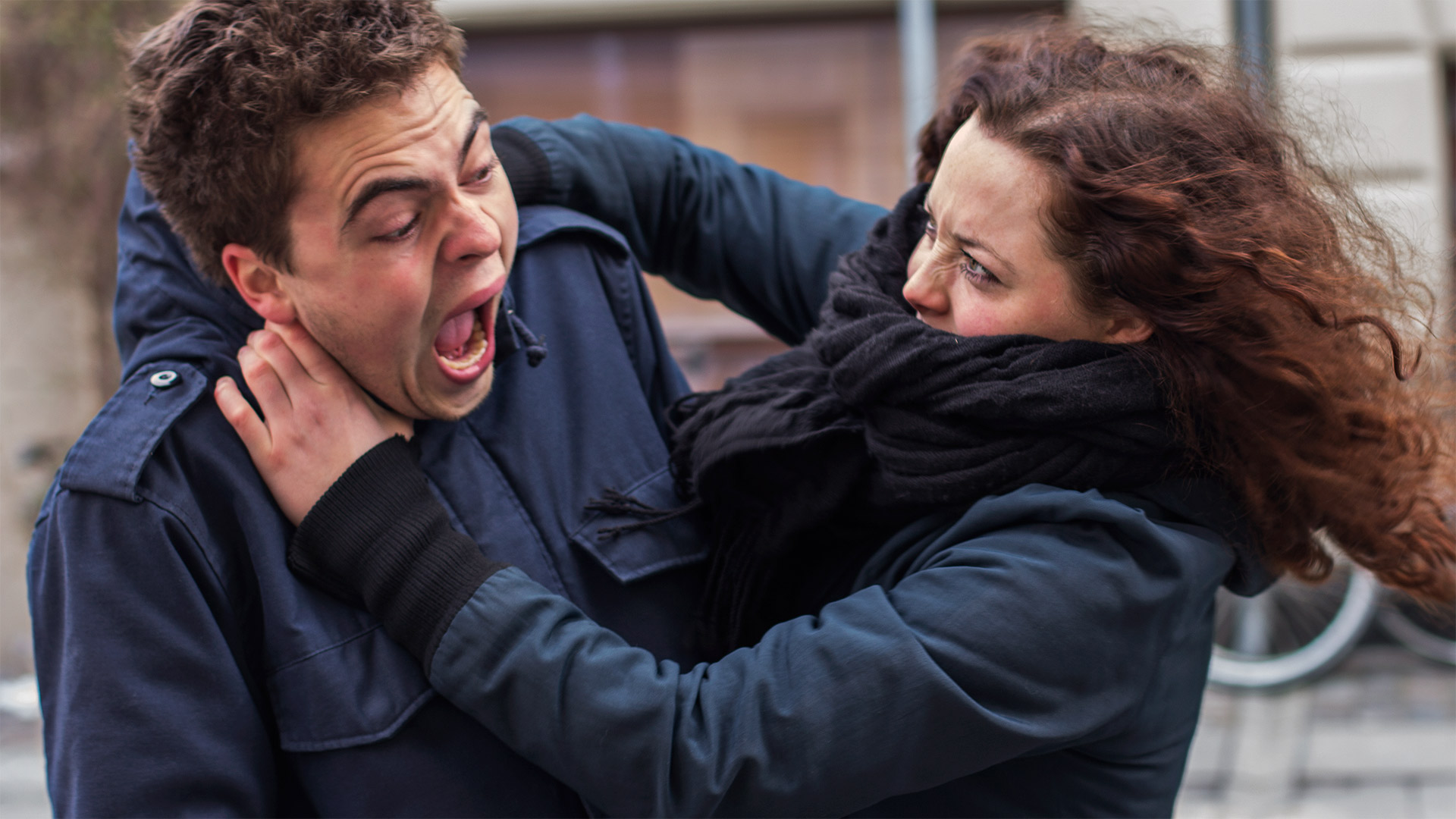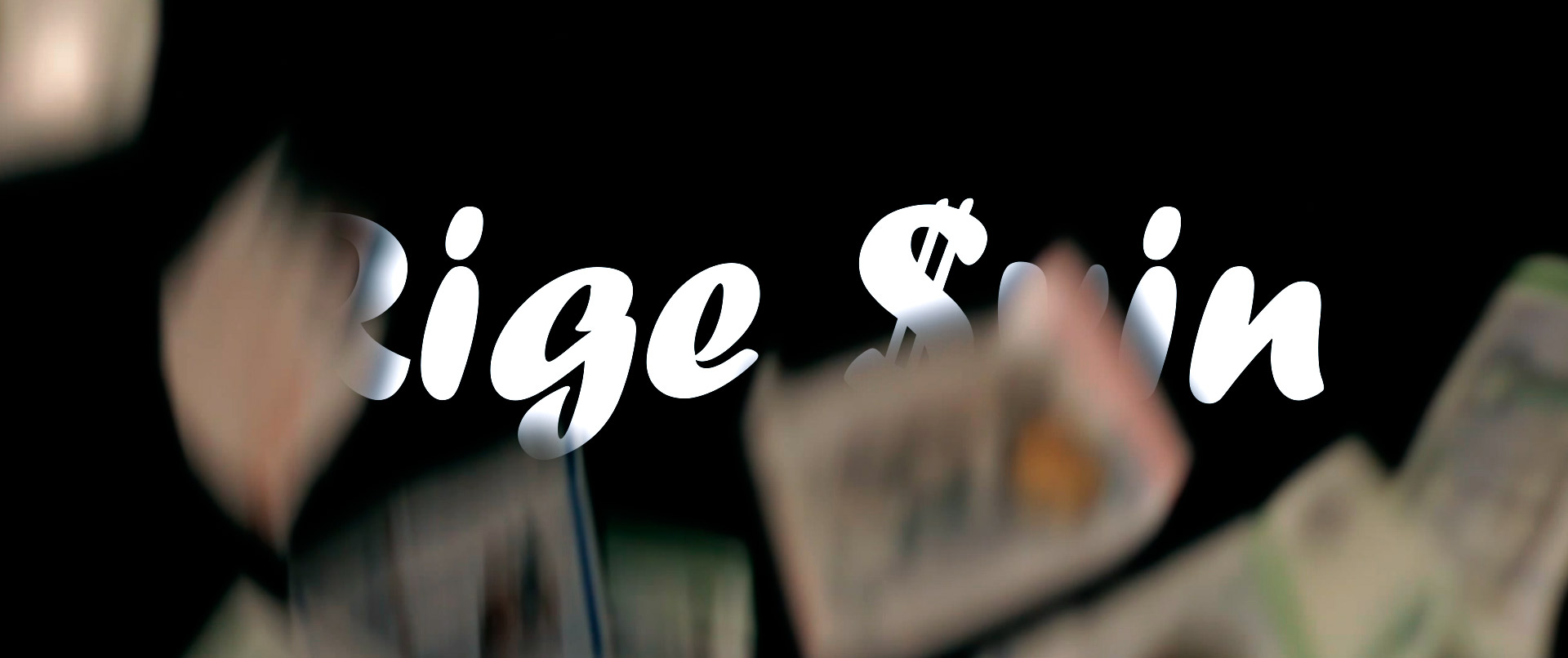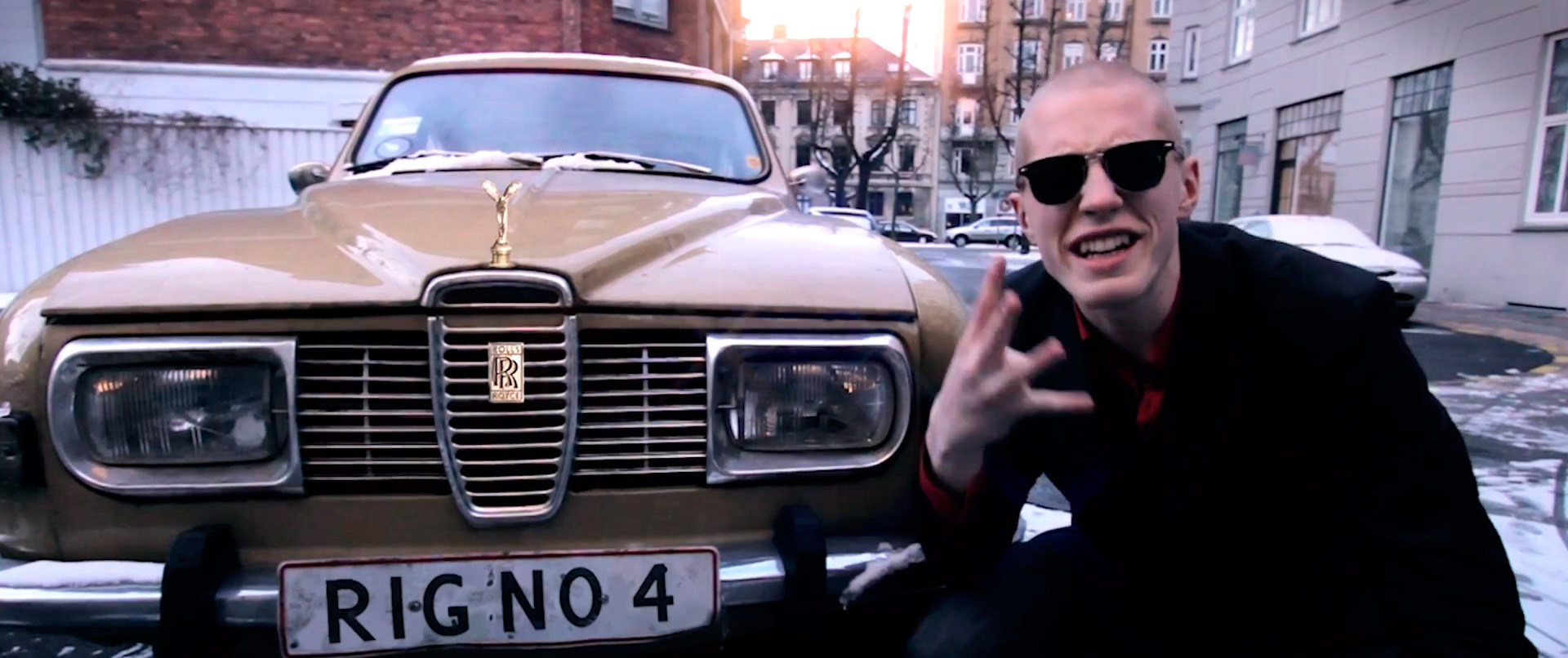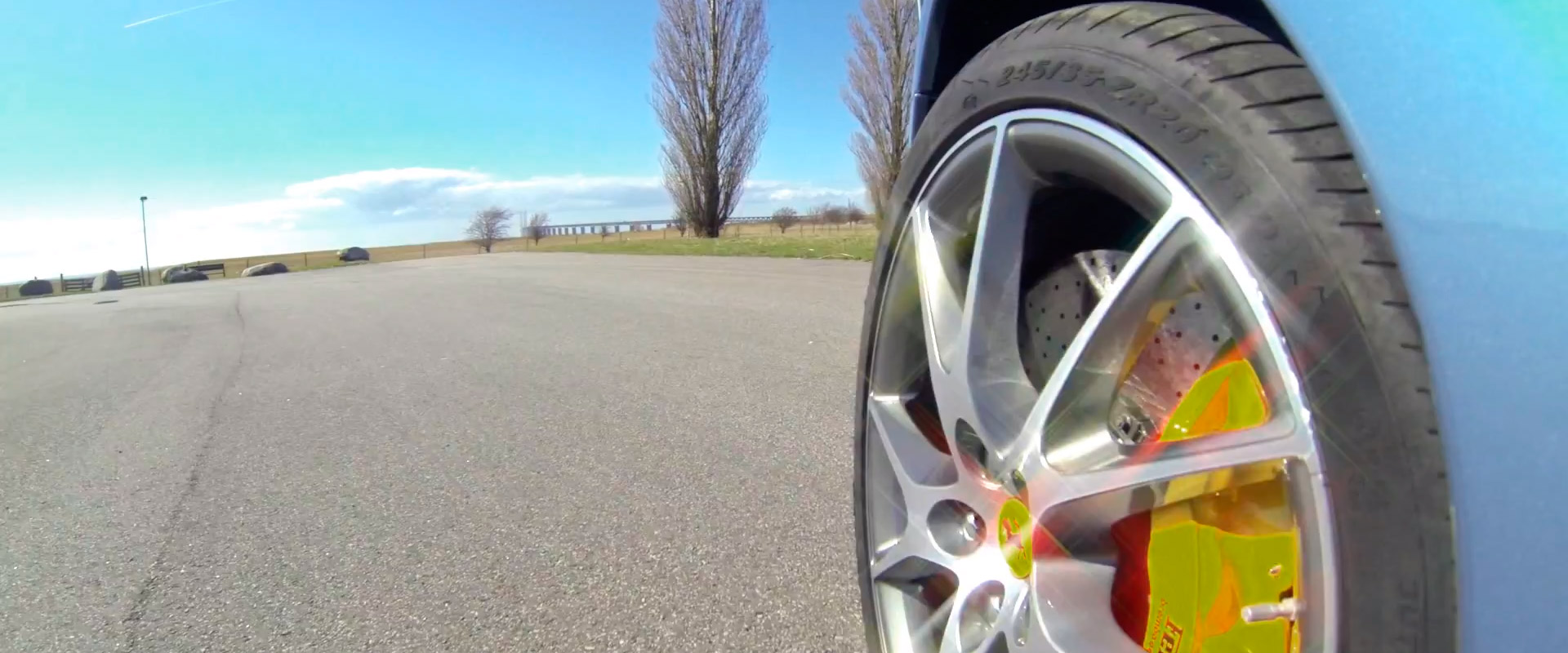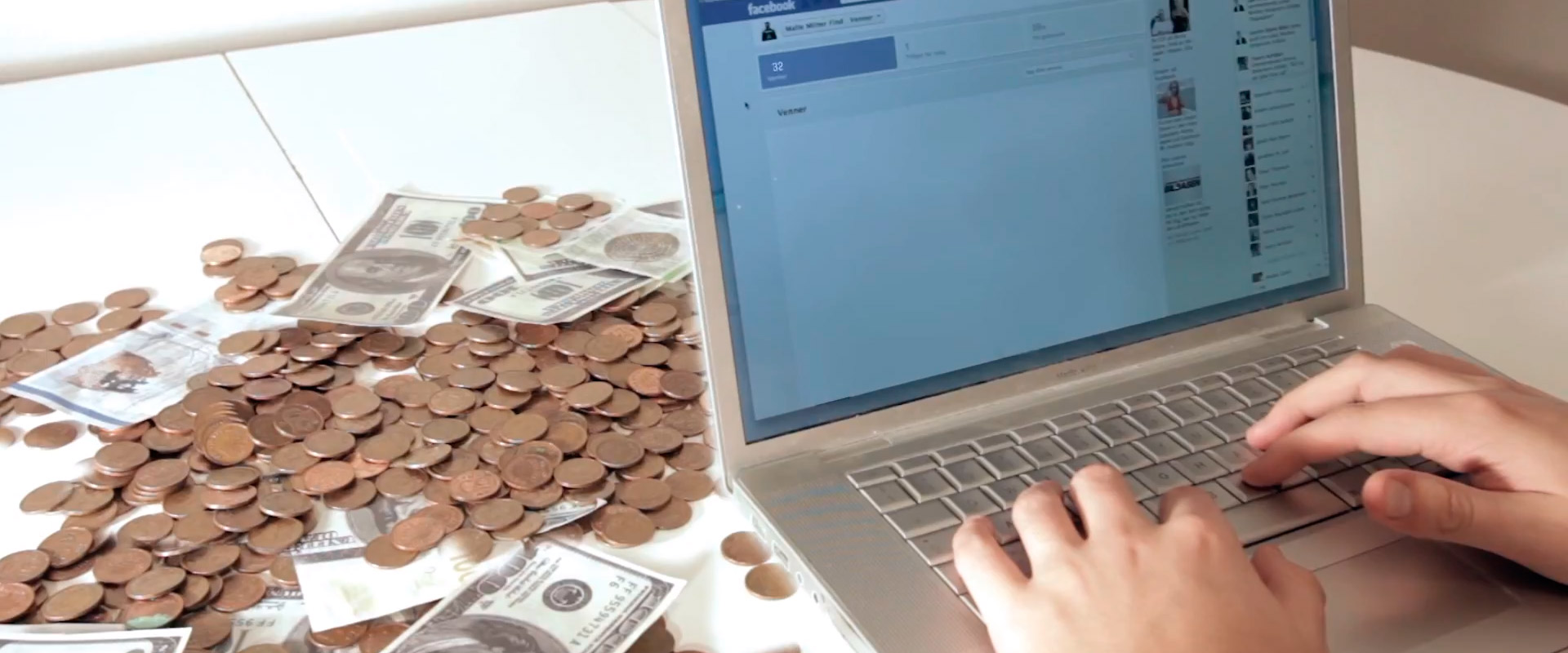Rige Svin
Both the concept for the song and the video came from simply fooling around with different character concepts while listening to a great beat that Malte, my incredibly talented producer and co-star, had made the night before.
After a lot of awful ideas, we came up with the concept of two rich and stingy men.
These men would have no problem buying an expensive car or a big house, but they would be reluctant spending money on anything that didn’t give them immediate status. They would only care about themselves and feel nothing but pity and disgust for those less blessed money-wise than them.
The song “Rige Svin”, best translated to “rich pigs”, was born.
In the next several hours, we continued working on both the beat, the melody and the lyrics.
It all came together when Malte suddenly started singing what would become the chorus to the song: “Money is a big problem… for you and not for us”
From the beginning, we knew we had to make a video
When we finished recording it the next day, we knew that we had to make a video to go along with the song. And as the lyrics are so explicit and graphical, we also knew that it would take a lot of effort and a lot of different locations.
So we started sketching out ideas, coming up with different scenarios to go with the lyrics. Some were straight forward, and some were a bit more difficult to showcase.
For example, it took us a little while to figure out how to successfully show how someone earns money and loses friends – at the same time – all in a matter of seconds. (The answer was to use a pile of money, a computer and After Effects. Get the full breakdown later on)
Having very specific footage to almost every word in the verses made the never ending music video dilemma of “what to put where” a bit easier to manage – which of course was pleasant. This way, we had a specific scene to each line of the verses.
Actors
To assist us in telling the story, we brought in four very talented actresses: Victoria Handskemager, Sophie Larsen, Alberte Halmø and Thyra Sisse Jensen.
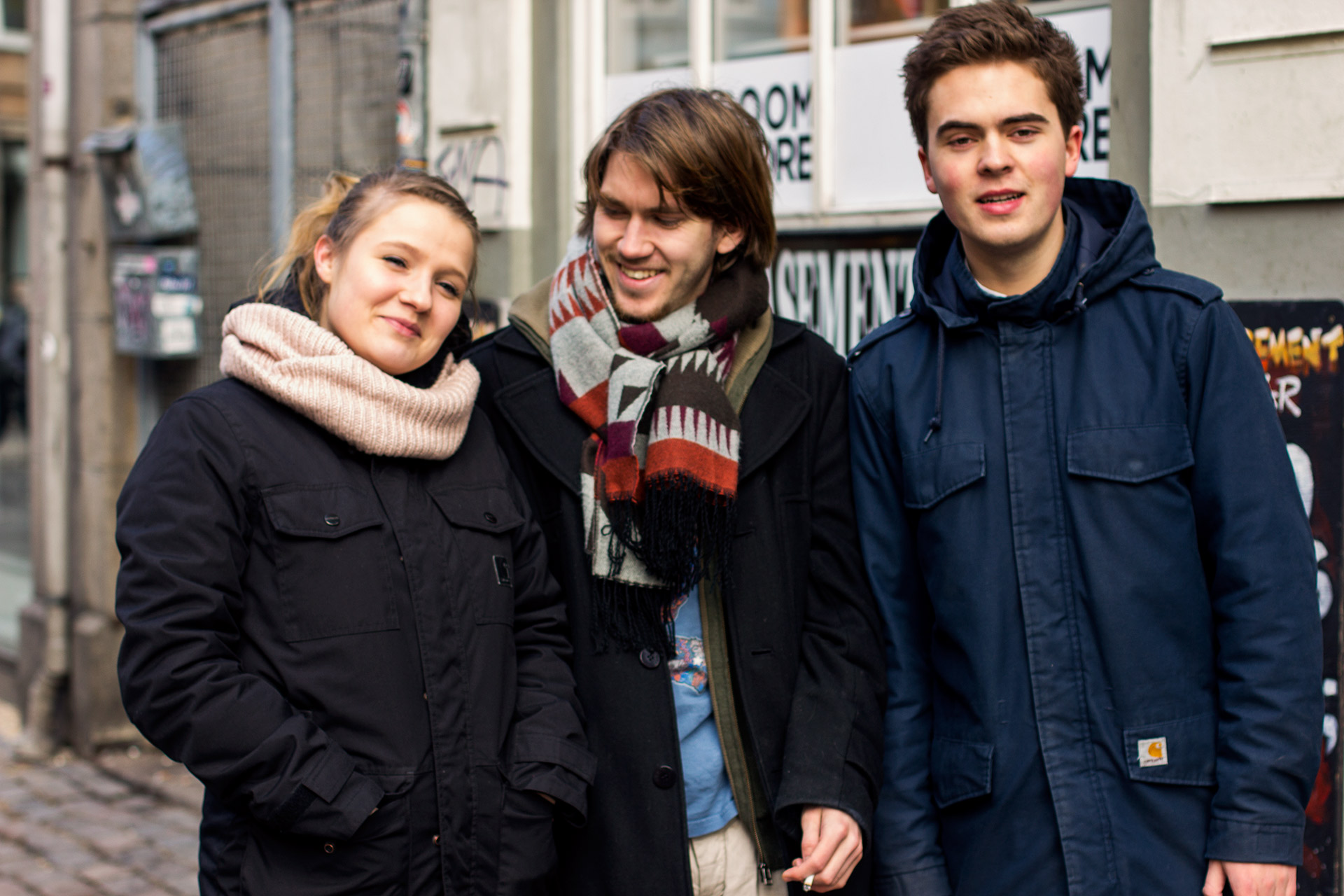
Even though it looks like Malte thinks so, it wasn’t early in the morning. The guy in the middle is Jeppe Pelck Bille Davidsen and he plays the guy wondering about Malte’s entrance to the bar. The girl on the left is Thyra Sisse Jensen.
Getting the right performance from actors isn’t always as easy as handing them a script and/or a storyboard and putting them in front of the camera, but in this case, it was even simpler than that.
They simply watched the footage we had already shot to get the vibe (most of the footage including only Malte and me), all while getting a feel for the song, too.
I’m sure that Alberte didn’t find it natural to want to go home with me simply because I offered her a large bag of cocaine, but her reaction on camera sure didn’t show that!
Picking the right actors is half the battle to great performances – and in this case, we were more than lucky that these wonderful girls found both the time and energy to help us with our project.
The backstory

To give the video some backbone, we constructed a story which would dictate most of the action not directly related to the lyrics.
This is what we wrote down prior to making the shot breakdown and storyboard:
“Malte rolls up to a party in Malmö Centrum in his blue Ferrari. At the party he meets Charlotte, a beautiful dark-haired girl, whom he brings home to his apartment in the city.
Next morning he says that he must go and visit a good friend to do some business, but that he can drop her off on the way. She lives a little out of town, but close to Maltes friend, so it suits her fine.
Malte chooses to drive the shortest way to Alex’ house, and thus doesn’t drop Charlotte off at her home. Alex stands outside waiting for them when they arrive (hungover from the night before), and Malte then throws Charlotte out of the car to make room for Alex.
The two friends take the Ferrari for a spin on the first sunny day of the year. They are excited to feel speed and excitement again after a long and dreary winter, and they know that the ladies are just waiting out there.
They drive slow on the streets, fast on the highway and more than anything, they want to be seen.”
This story, with Malte and I driving around, is the present. Everything else is stories from the recent past that we share with each other while driving.
Even though this story isn’t important to say what we wanted to say with the video, it made it a lot easier for us to plan the final edit as well as to give it some kind of feeling of continuity – all while tying our two characters together.
Breaking down the visual effects:
Money falling down in front of the text (0.08)
The first VFX in the video is about 8 seconds in, showing money bills falling down in front of the text “Rige Svin”.
The money falling down was shot with a black back drop with 60fps and a shutter of 1/50. It was then slowed down to 40% in Premiere. It was my father who dropped the bills (gracefully, should I say so myself).
I then got it into After Effects via dynamic link, and after adding the text, I started rotoscoping the notes. Rotoscoping is a pretty straight-forward process. With a little patience, the results are often pretty impressive. To get some of the bills behind the text in the end of the small sequence, I simply rotoscoped them as background instead of foreground.
Learn more about rotoscoping here: Tutorials on Rotoscoping in AE (link to Google search).
To make it look even more realistic, I also added a bit of motion blur to the rotoscoping (which is also apparent in the still from above where you can see through the edges of the notes).
Changing a license plate (1.04)
To change the license plate on the yellow car at @1.04, the first thing I had to do was to export a frame for editing. With the clip on the timeline in Premiere, I right clicked it and chose “Replace with After Effects Composition”. This will open up After Effects and make a “dynamic link” between the two – meaning that saving the comp in After Effects will also make the changes appear in your Premiere sequence.
This is great for a while bunch of stuff, but actually wasn’t needed in this case. All I needed After Effects for was the “Export frame to clipboard” feature, which can be found under File -> Export -> Export frame. This puts a copy of any given frame of your footage in your clipboard – which then can be pasted into a Photoshop document of the same size.
Once inside Photoshop, I had all the artistic tools needed to do the job available. I started with making a blank license plate, erasing the real text by cloning the parts just beside it. I then “grunged” the now bare plate with low opacity “grunge” brushes at small sizes. You can find grunge brushes, as well as many other kinds of free brushes for Photoshop, here: DeviantArt Photoshop brushes.
To add the text “Rig no 4”, I found a font that matched the font used for Danish license plates. I then gave the letters the right amount of space between them, and used Photoshop’s transform tools (mainly skew and warp) to give it the right perspective. To finish it off, I also “grunged” the text by adding stains and deleting small parts of it.
Adding the Rolls Royce logo and small statue was mainly a question of finding the right stock photos. I then only had to match the colors, lighting, position and sharpness.
I then imported the .psd into my Premiere project and added it on top of the original clip on the timeline. Playing it back, I was of course totally static as it was just a picture. The trick is to crop out the moving parts of the .psd – which was easily done with the crop “effect” inside Premiere.
For more advanced masking, After Effects has some very powerful tools available, but with the camera locked down on a tripod and my motion not spilling over my Photoshop manipulations, I was good to go.
Extreme slow-motion with Twixtor (2.00)
With the tools of today, capturing extreme slow-mo is neither very difficult or expensive. You simply need a camera capable of capturing around 60 frames per second on a reasonable resolution, the ability to adjust the shutter manually and Premiere or After Effects with the Twixtor plugin.
It should be said that this isn’t in fact “real” slow-motion. Twixtor merely estimates the motion going on between the frames to make it look like extreme slow-motion. But to me, this difference is rather subtle, and the before mentioned formula is capable of capturing some truly amazing shots.
To make this kind of extreme slow-motion look good, there are a few things to keep in mind.
- The first thing is stabilization. The relatively minor annoyance of shaking gets multiplied exponentially when you slow down footage by more than 70-80%. In this case, the footage was slowed down to about 5% at it’s peak.
- The other thing is to move slowly yourself. Actually doing things very slowly can add to the effect tremendously.
- Action accelerates slowest at its peak. The frames just before gravity pulls an object down are the frames you probably want to use.
- Having as few distractions in the background as possible helps Twixtor estimate the motion.
- Be careful which light sources you have in your image. When you use a shutter speed faster than about 1/100, light flickering starts to become apparent. We actually made this mistake with our shot – you can see the light inside the flower shop behind Malte flicker – but decided to keep it anyway as it added to the dramatic effect. Learn more about light flickering here: Rough Guide to Flicker-Free HD Shooting.
And for more tips on shooting extreme slow-motion with Twixtor, check out “How to best use twixtor for extreme slow motion” by Philip Bloom.
Mounting a GoPro on a Ferrari (2.38)
Using a GoPro Hero 3 Black Edition and the GoPro suction mount made it possible for us to capture footage while driving in a very safe manner.
I simply used a Battery Bacpac for the extended battery life as well as my iPhone and the built in WiFi in the GoPro to preview the footage. The suction mount then did the rest – and I’ll tell you one thing; driving 125 mph did in no way weaken its grip on the car.
For the GoPro, I used the 2.4k 23.976fps mode with ProTunes turned on. Premiere did have a few hickups playing it back, but rendering it was relatively pain free – and I could easily play it back on a lower resolution.
Noma/Formel B/fast food (3.03)
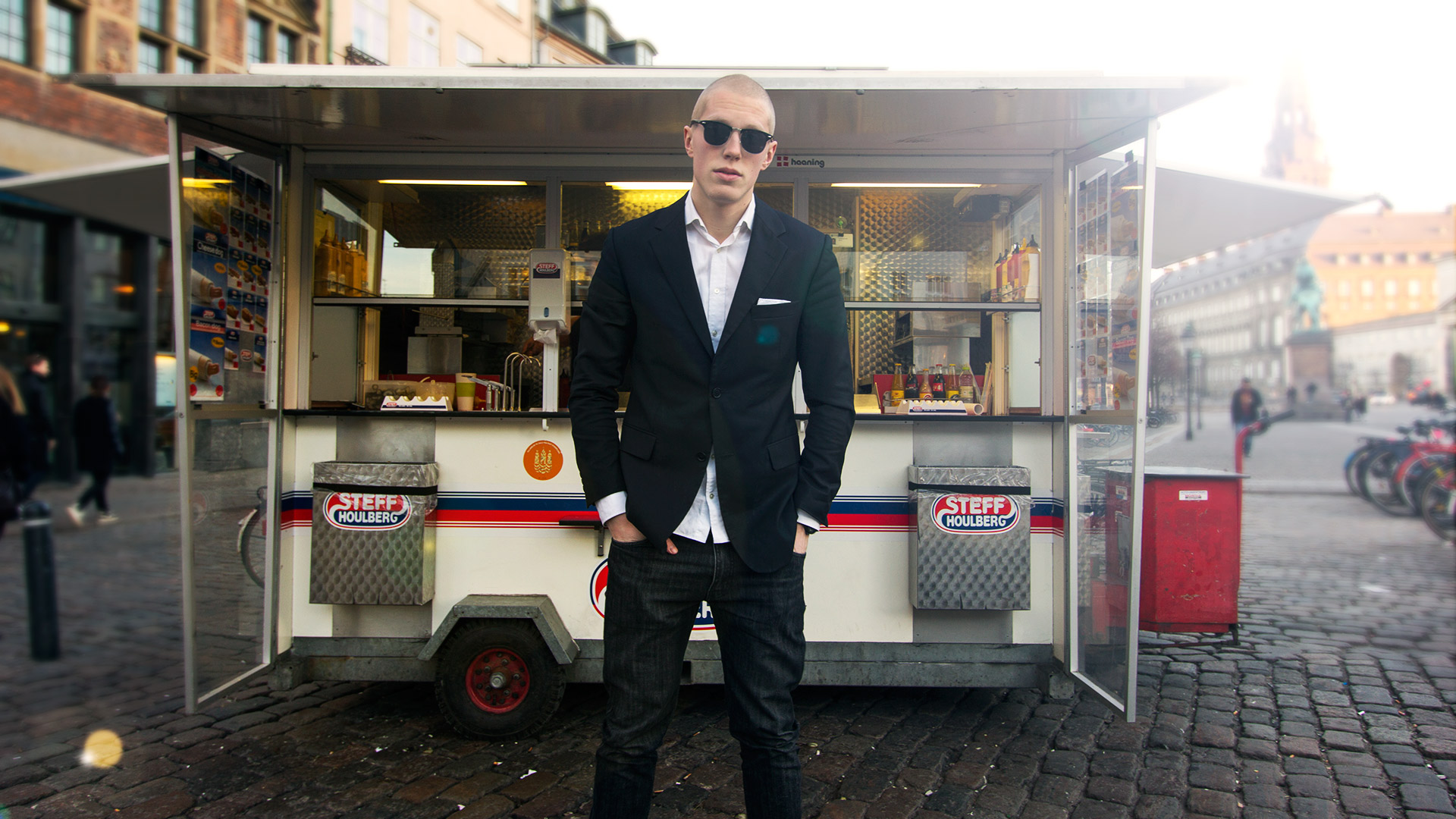
Walking past the two Michelin star awarded restaurants NOMA and Formel to end up at a fast food stand.
To make it look almost like I was in front of a green screen, we simply set up the camera on a tripod and counted something like 8 steps and marked a spot. I then walked directly over that spot, trying to match my tempo from the other clips.
As I had walked in front of the camera several times at each location, we had a lot of material to choose from when editing. Matching the clips was then only a matter of looking through them and testing different combinations until we finally got it exactly right.
Losing friends on Facebook (3.40)
To do this shoot, we first had to film the pile of money adding up and then stitch it together in After Effects. This was relatively simple and just took a few layers and some masking. The Facebook friends dissapearing was realized by having two versions of the still image. One with the friends – and the other one without them. I use
Multiplying money (3.42)
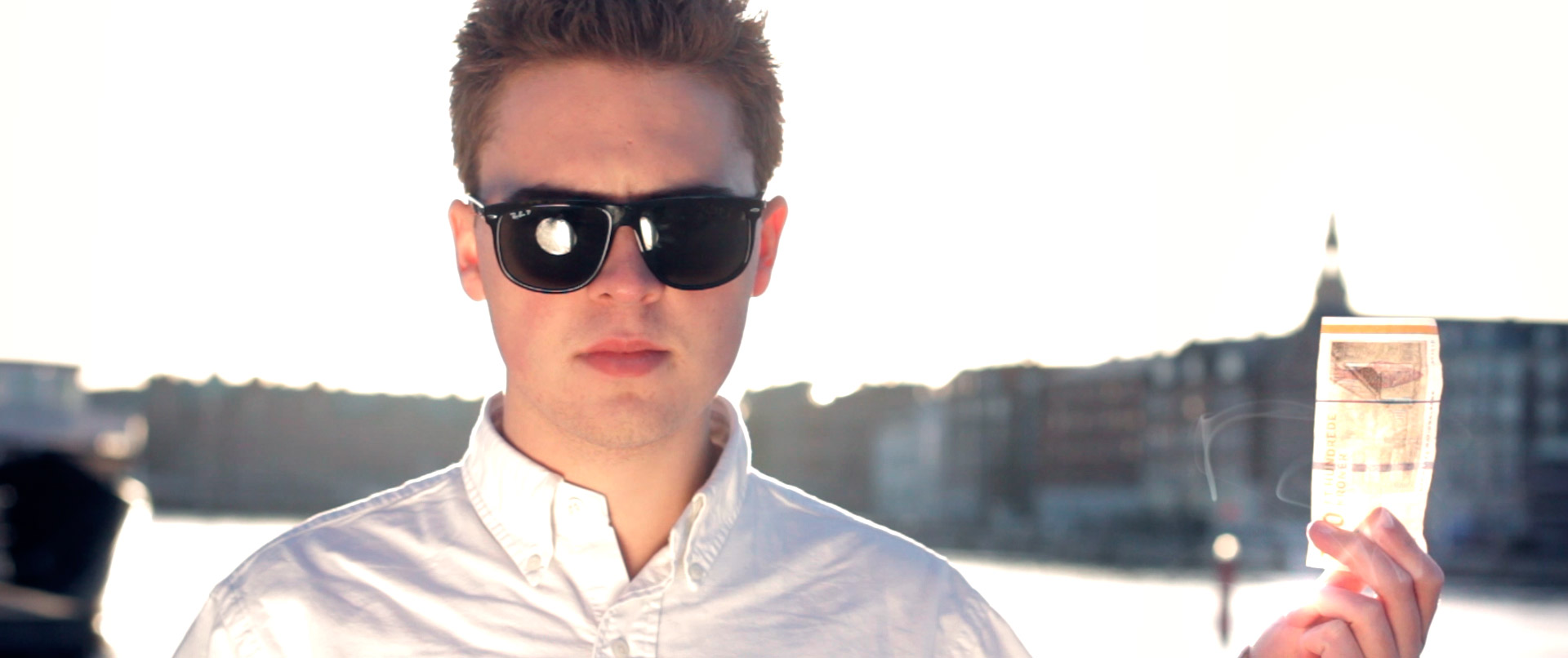
To make one note become several in the blink of an eye consisted of setting up a tripod and then having Malte stand perfectly still. I then very very carefully put in more money in his hand while he still stood statue-still.
In After Effects I also used Ray Light along with some smoke stock footage to help sell the effect.
How to get a horse to star in your movie
As you can see on the snow on the ground, the shot with me sitting on a horse rapping to the camera in first verse was one of the first shots we shot on the production.
Getting a horse in the video proved to be a lot easier than we first expected. We simply called up a danish firm specializing in renting out horses to bachelor parties etc., and asked them if we could come out and visit them to shoot a few lines for a music video.
They liked the sound of it, so we drove out there, got me and Lucas (the very talented horse) saddled up and walked 100 metres away from the stable. We then got a few takes – with the owner of the firm standing just outside the picture to stop Lucas if he had chosen to run away with me on his back, scared to death and not knowing what to do – and called it a day.
Fortunens Ponycenter (the name of the firm) were so kind to give us the experience for free, and we then promised to mention their name in the credits.
Editing to the beat
Placing your cuts at the right moments is crucial to making a great music video. But you can’t just put a cut on each fourth down beat as it will quickly feel forced and boring.
It’s very important to place cuts on different kinds of drums, the melody and the words to create the right temp – as well as going “outside” the music and placing cuts on the action to mix it up.
But before venturing outside the safe zone of the drums, it’s a good idea to lay down some markers for guidance. In Premiere, simply play back the sequence and hit “M” on your keyboard to place a marker. You can easily change their location later on, as well as deleting them, so don’t be afraid that you don’t nail the down beats (or high-hats, or whatever fits the song you’re working on) the first time. Later on, you can scrub through it frame for frame (with the arrow keys) to get the exact placement.
Conclusion
With “Rige Svin”, We got to try a lot of new things. I rode a horse, we rode a Ferrari, we ate a few juicy burgers and I got the chance to try a lot of cool stuff in After Effects – just to name a few.
We made a few mistakes along the way, but thankfully, there’s no better way to learn than to have fun. And working on “Rige Svin” was extremely fun right from the beginning.
Luckily, a lot of amazing and talented people helped us with our project, and in the end, I am proud of the result.
Details
Location: Copenhagen
Starring: Victoria Handskemager, Sophie Larsen, Thyra Sisse Jensen, Alberte Halmø, Jeppe Pelck Bille Davidsen, Sophie Larsen, Malte Milner Find & Alexander Kinnunen
Direction and video post production by: Alexander Kinnunen
Camera work by: Alexander Kinnunen & Victoria Handskemager
Music production by: Malte Milner Find (SpinStone Productions)
With special thanks to: Lars Nyström, Lucas the horse from Fortunens Ponycenter, Basement Bar, Fredrik Kinnunen, Helles pølsevogn, NOMA, Formel B, Fresh Fitness, CBS, Burger King, Blomster Hjørnet, Ci Voleva & Lagkagehuset

